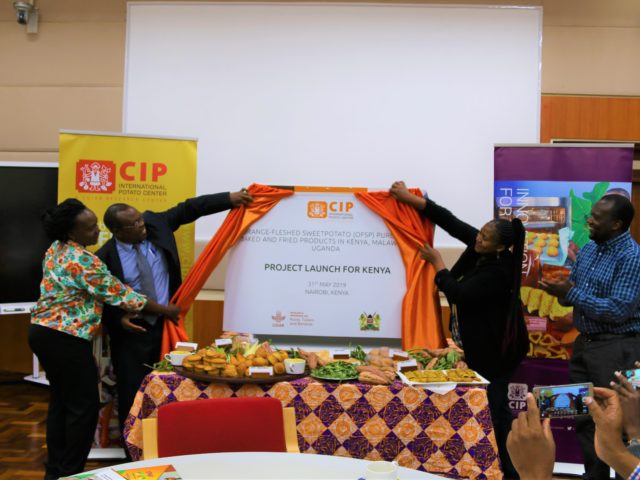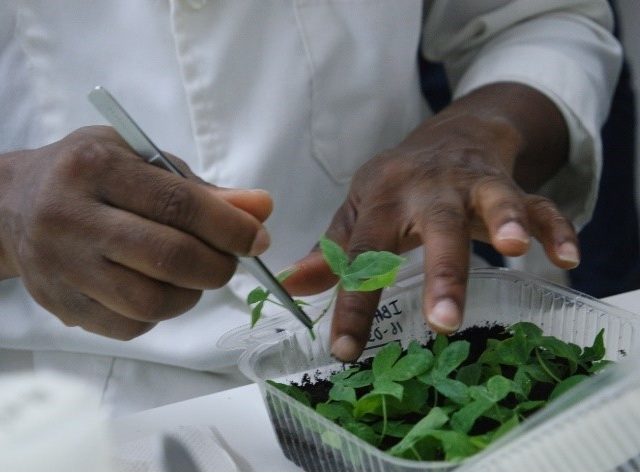The demand for animal source foods in Uganda is rising as the country’s population continues to grow alongside improved income and urbanization.
Pork in particular has become an increasingly important food in the diets of Ugandans, reflected in the significant growth in consumption rates from the 1960s, when it accounted for only 1-2% of the per capita consumption of meat, to today’s level of at least 30% of the 10 kg consumed per capita/year.
Despite its growing popularity among both farmers and consumers, smallholder pig production in Uganda is faced by key constraints including limited access of farmers to a reliable supply of quality pig feed and the high cost of feed which can account for up to 62% of the total production cost.
Among the common fodder given to pigs in Uganda are sweetpotato, banana and other root and tuber ‘residues’, such as vines, leaves and peels. However, new research reveals that at time of harvest there is an excess of feed that is subsequently wasted as small-scale pig farmers in Uganda struggle to conserve this fodder for use during periods of scarcity.
The results are part of a qualitative study entitled ‘Perceptions and practices of farmers on the utilization of sweetpotato, and other root tubers, and banana for pig feeding in smallholder crop-livestock systems in Uganda’, which was undertaken in two districts of Uganda with high pig and sweetpotato production in order to understand how farmers’ use and perceive root, tuber and banana (RTB) crops as pig feed.
Published in the open-access journal Livestock Research for Rural Development, the study shows that pig production in these districts is dominated by small-scale farmers who produce both crops and livestock, and depend heavily on crop residues for feed.
Sweetpotato in particular was found to be the leading contributor to pig diet in rural areas, with farmers mostly using fresh, raw vines (70%) as compared to roots and peels. In peri-urban areas where farmers have greater access to commercial feeds, they typically mixed crop residues with commercial concentrates.
However, the conservation of crop residues is not a common practice and without access to new preservation technologies farmers can waste between 37% – 40% of their feed during periods of excess when the amount of feed exceeds demand by the herd.
In contrast, during times of feed scarcity many farmers must sell off their stock to cope, subsequently lowering pig market prices and affecting the profitability of their businesses.
In light of these findings, the authors call for further exploration of strategies to conserve RTB crop residues during the harvest period to reduce waste and improve incomes for smallholder pig farmers in Uganda.
This research was conducted by scientists from the International Livestock Research Institute, the International Potato Center, Iowa State University-Uganda Program and the Ugandan government as part of the ‘Expanding Utilization of Roots, Tubers and Bananas and Reducing Their Postharvest Losses’ (RTB-ENDURE) project which is implemented by the CGIAR Research Program on Roots, Tubers and Bananas. This work also forms part of a portfolio of collaboration with the CGIAR Research Program on Livestock and Fish.
The RTB-ENDURE project is funded by the European Union and implemented with the technical support of IFAD with the aim to improve food availability and income generation through better postharvest management and expanded utilization of root, tuber and banana crops in Uganda.
Featured photo by N.Palmer/CIAT





